13: Drawing the Pallets
The first tooth was drawn next to line (2), which had an angle of 30º relative to the vertical line (1). The 30º angle was chosen so that there would be a 2.5 tooth span between the pallets for a 15 tooth wheel. The angle between lines (2) and (4) was 90º so that the angle between the force exerted by the escape tooth and the force that acted to rotate the pallet would be 90º.
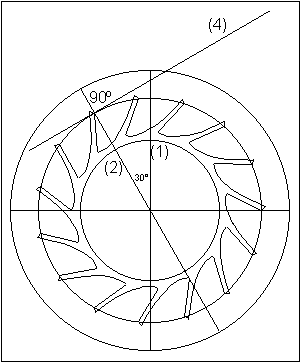 |
Rotate line (1) clockwise by 30º to get line (9). Rotate line (9) by 90º to get line
(10). Place line (10) onto the point where line (9) intersects the edge of the six inch
circle. The point where lines (1), (4) and (10) intersect will be the pallet's circle center.
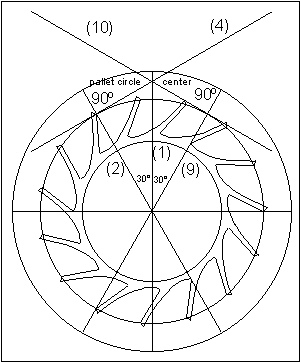 |
If you rotate line (2) counterclockwise by 2º, you would see that the escape
wheel's impulse face occupies a span of 2º of escape wheel rotation. (The impulse face
also provides 3º of lift and lock.)
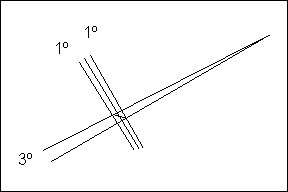 |
Since the escape wheel rotates by 12º per beat and you want 2º for drop and 2º for
the escape tooth's impulse face, the pallet should occupy a span of 8º. Rotate line (9)
counterclockwise by 4º to get line (11). Rotate line (9) clockwise by 4º to get line (12).
Repeat with line (2) to get lines (13) and (14):
 |
Rotate line (2) counterclockwise by 45º to get line (15). Notice that it is at an angle
half way between the escape circle's radius and the pallet circle's radius, shown by lines
(2) and (4) respectively:
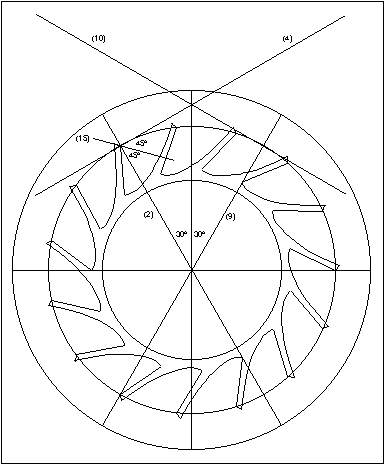 |
Rotate line (13) clockwise by 15º to get line (16), and place it onto the point
where lines (13) and (15) intersect. Line (16) will be the pallet's locking face, and it
will have a draw angle of 15º. Duplicate line (16) and place it onto the point where
lines (14) and (15) intersect: lines (16) and (17) are parallel. Rotate line (17) by 90º to
get line (18) and place it in a suitable position along lines (16) and (17). The pallet is
now recognizable. You could place a small line at the point where lines (2) and (15)
intersect: this small line would show the mid-point of the pallet.
 |
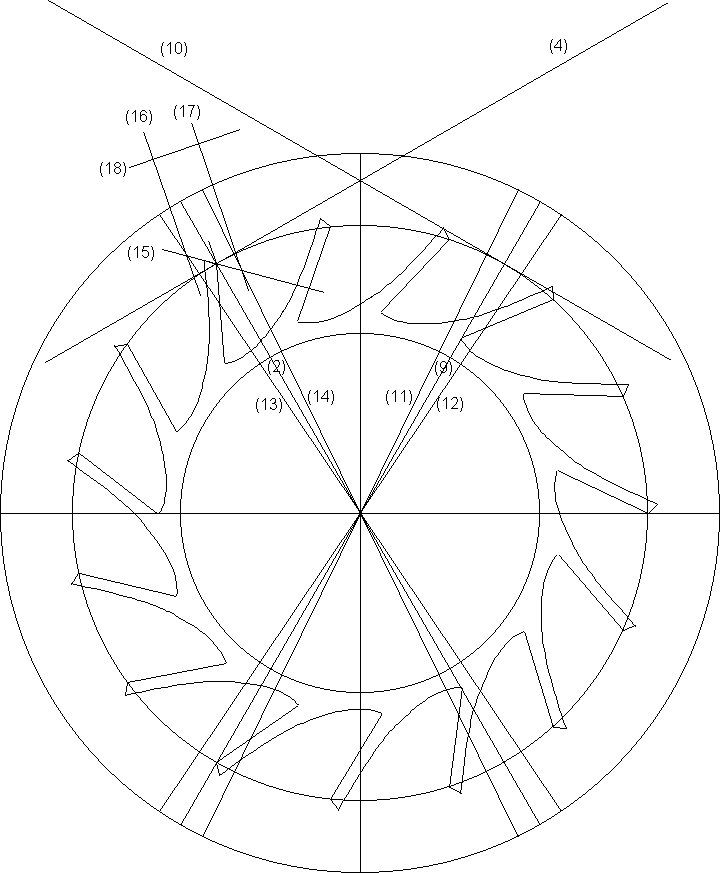 |
Once you finish the entry pallet, group the lines and duplicate them. Rotate the
second pallet clockwise by 60º because that is the angle between lines (2) and (9), and
then place the pallet on the exit side such that the mid-point of the impulse face lies on
the point where lines (9) and (10) intersect. Most watches have different pallets, but an
escapement using the same pallet on both sides can be designed, and using the same
pallets makes manufacture easier.
It will be necessary to draw the pallet circle to perform a simulation. The circle must
be larger than the drawing of the pallets, so I chose a six inch diameter circle, placed a
horizontal and a vertical line in it, grouped the circle and the lines, and then placed them
such that the circle center would lie on the point where lines (1), (4) and (10) intersect.
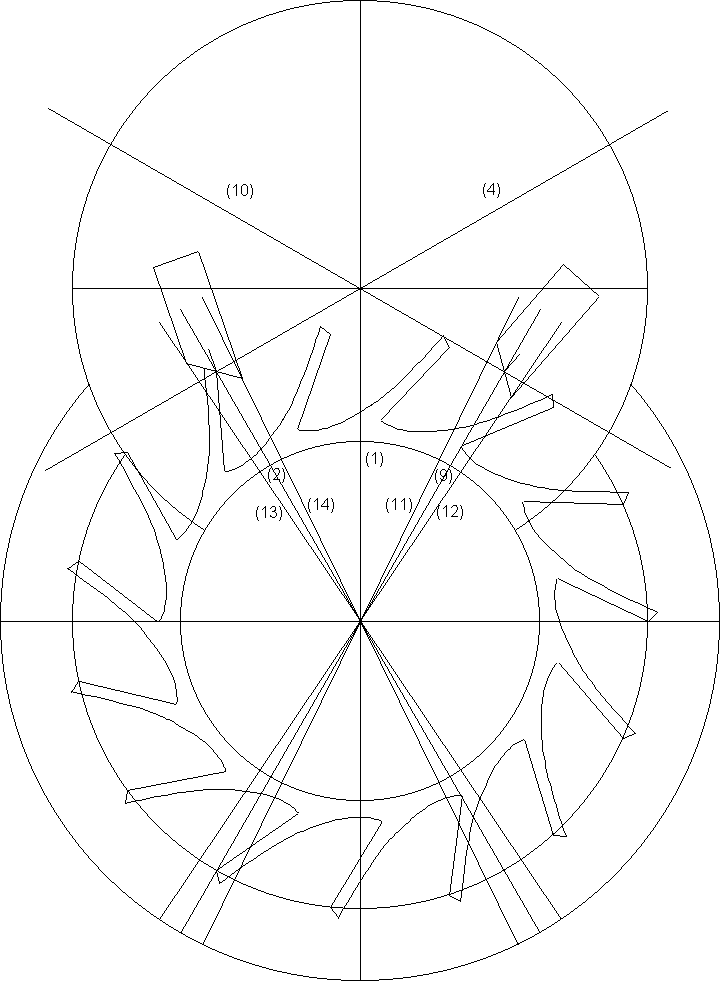 |
To draw the pallet arms, you could use circles, stretched and shaped to give the
outline you desire. It should be obvious by looking at the drawing below that the
design is of equidistant impulse.
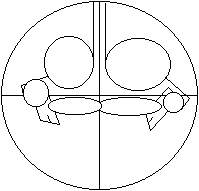 |
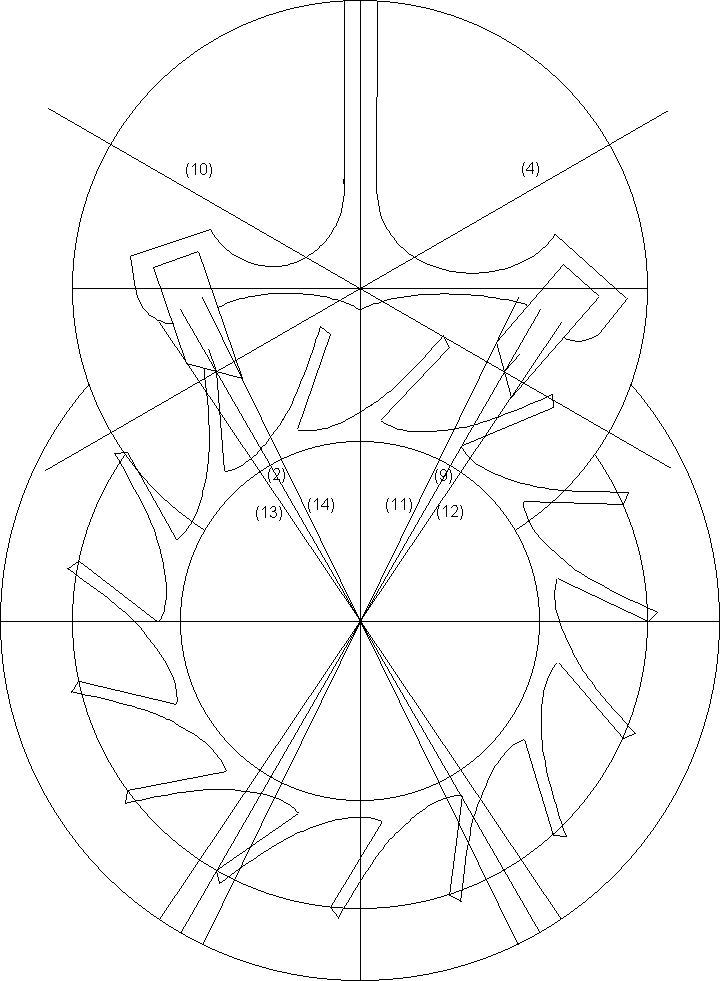 |
Go to Chapter 14
Go toTable of Contents
Go to Escapements